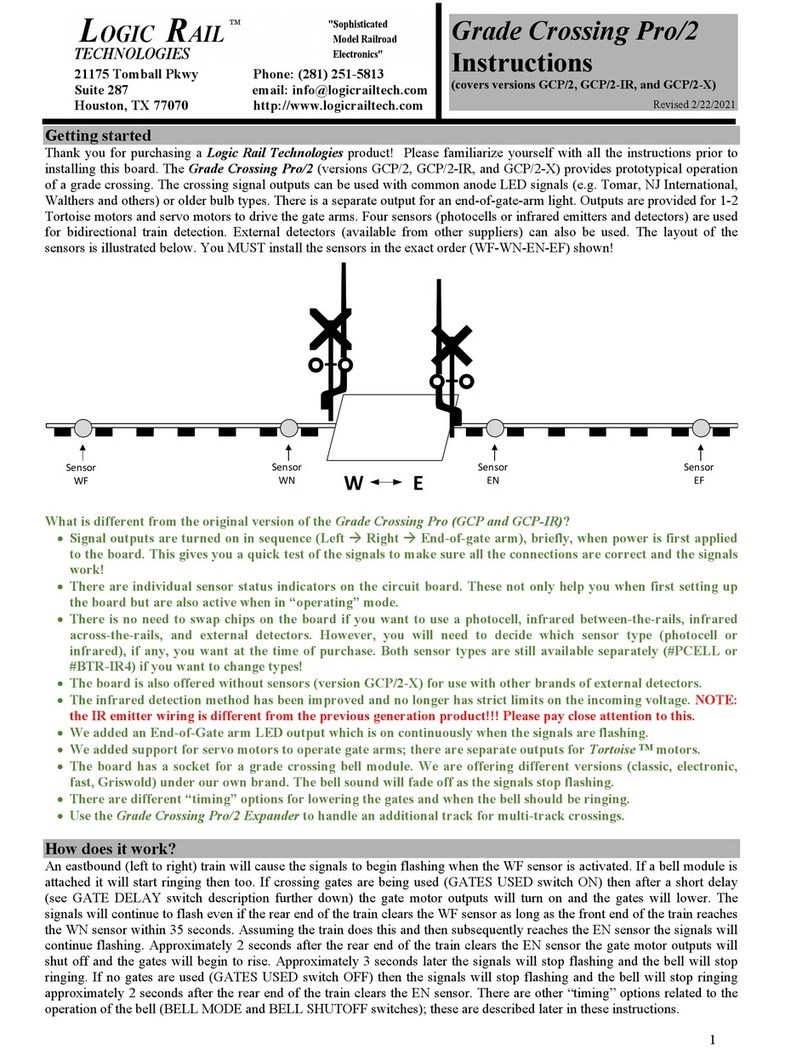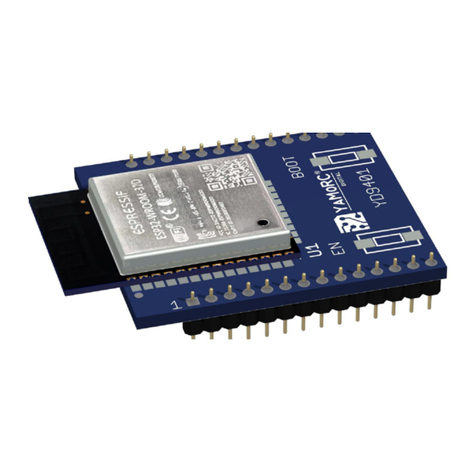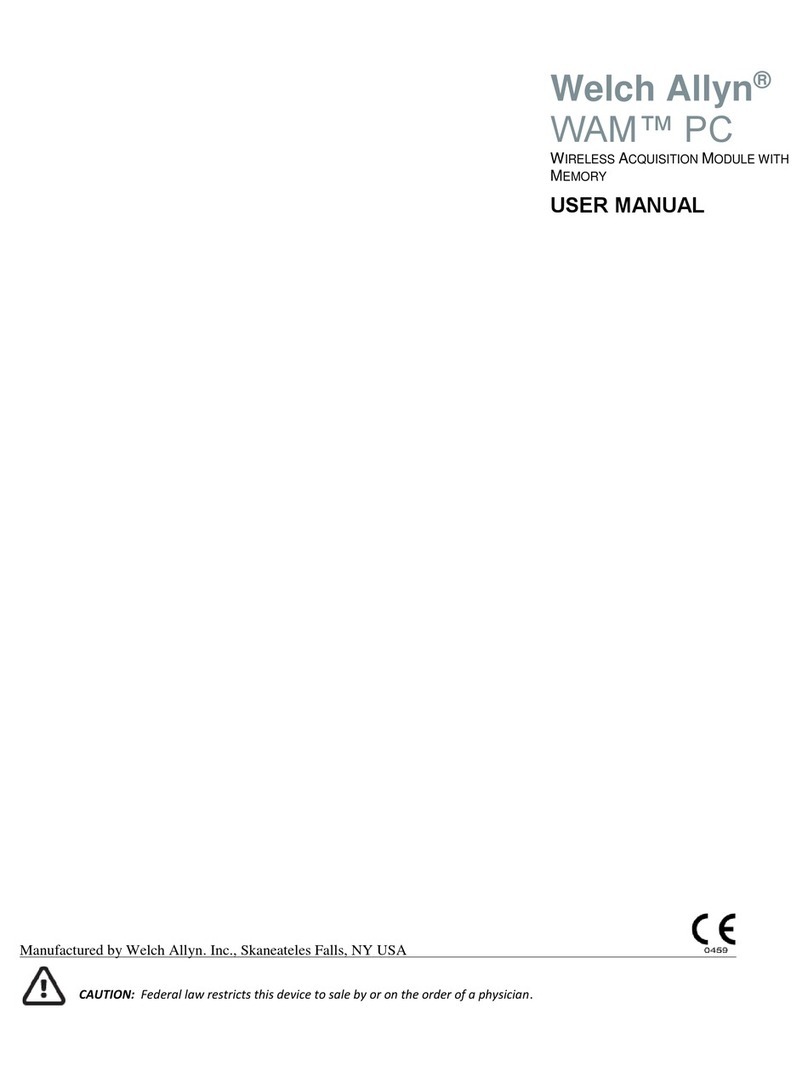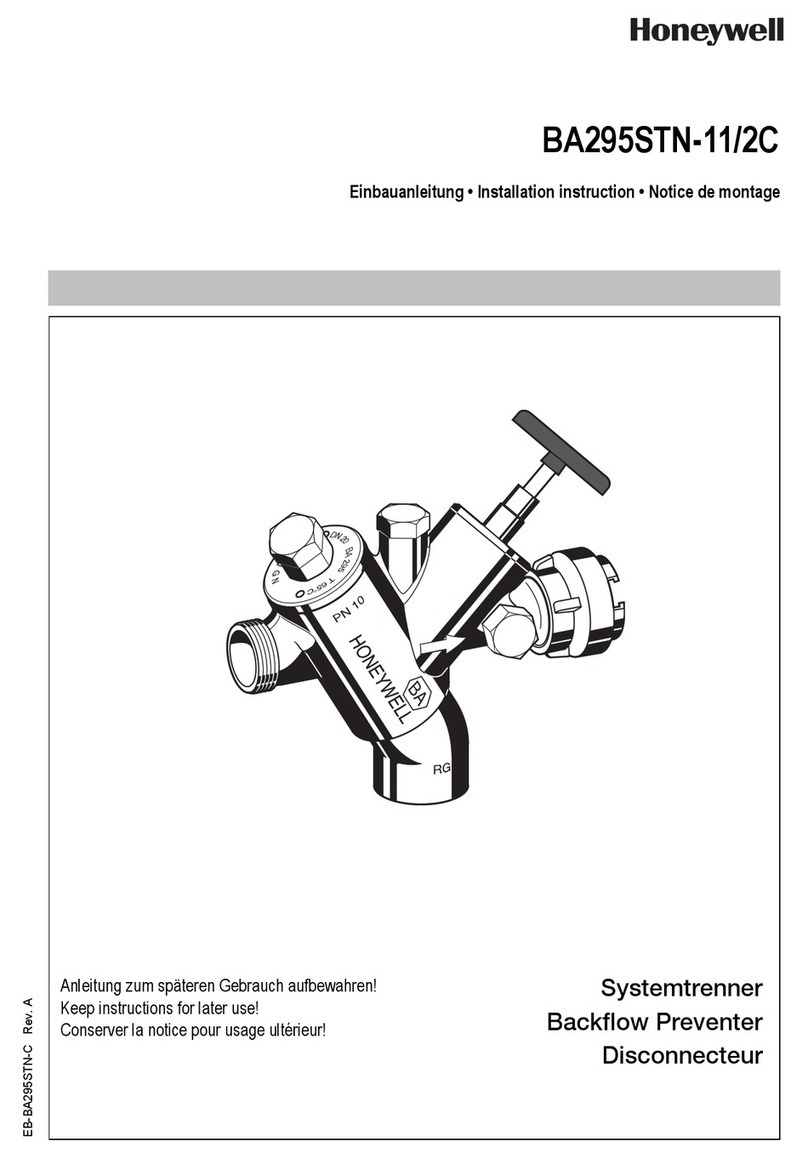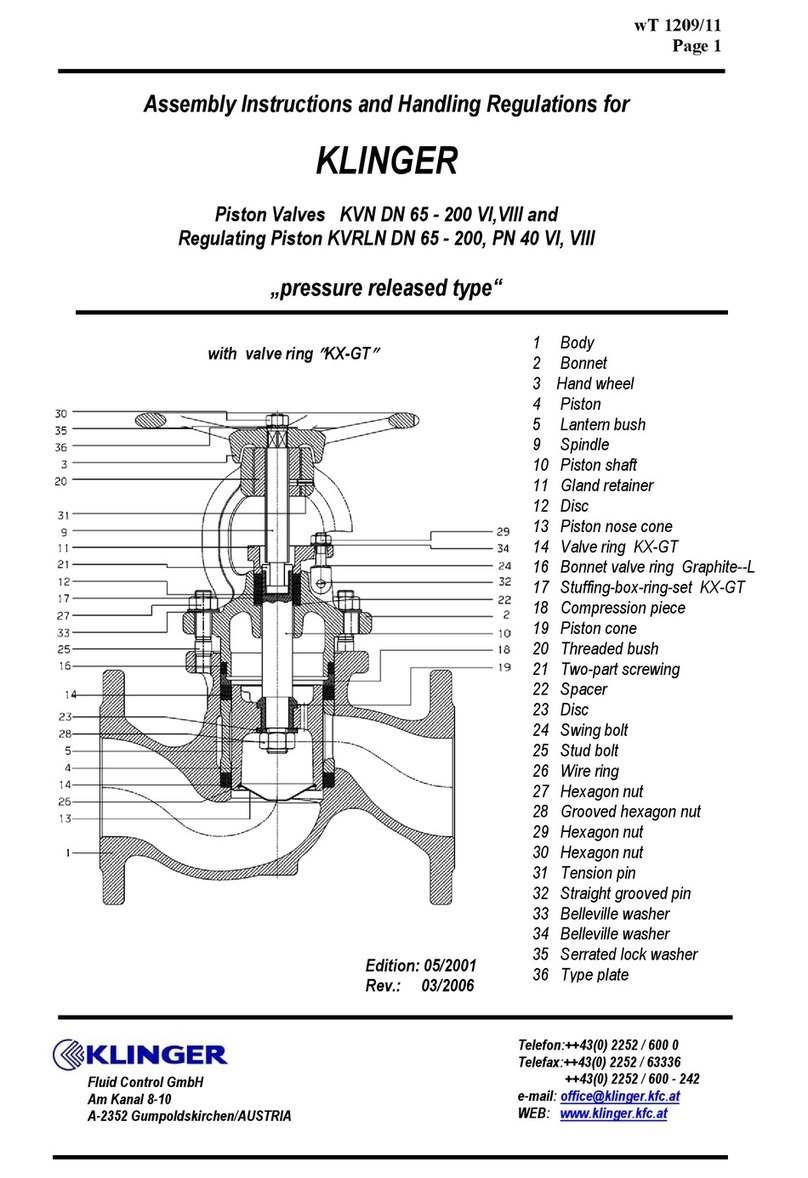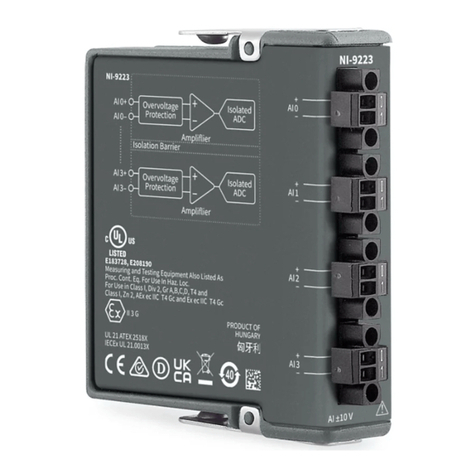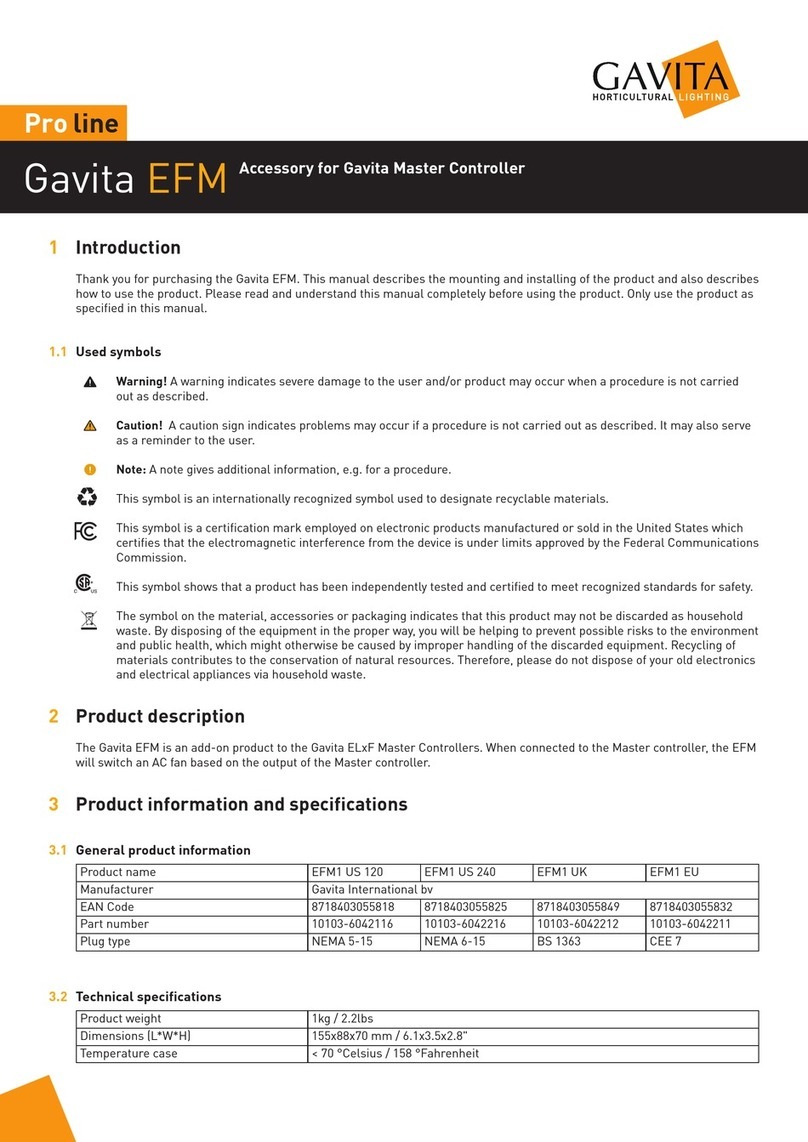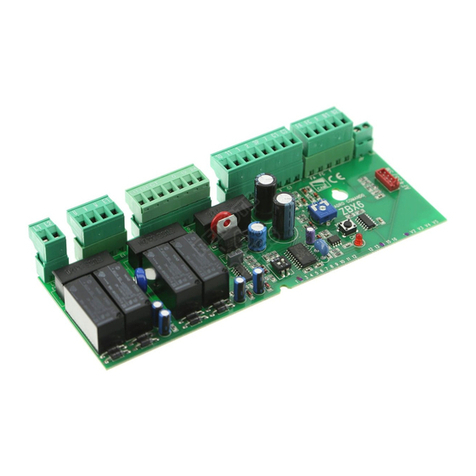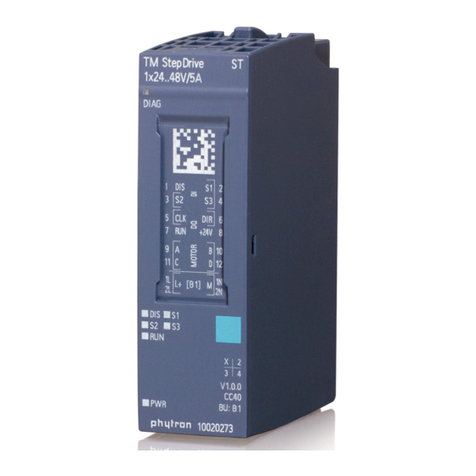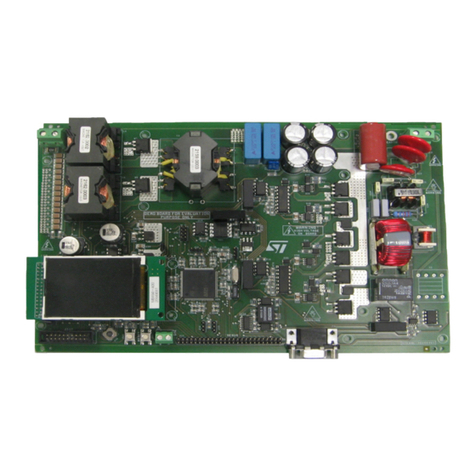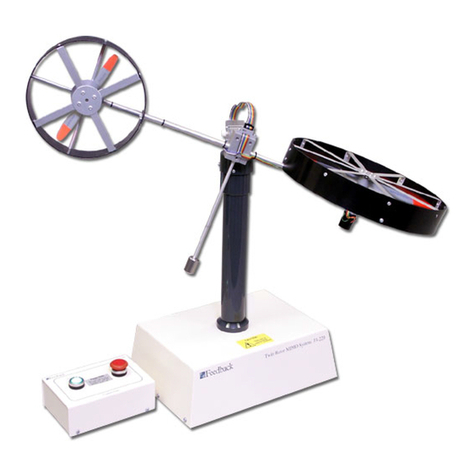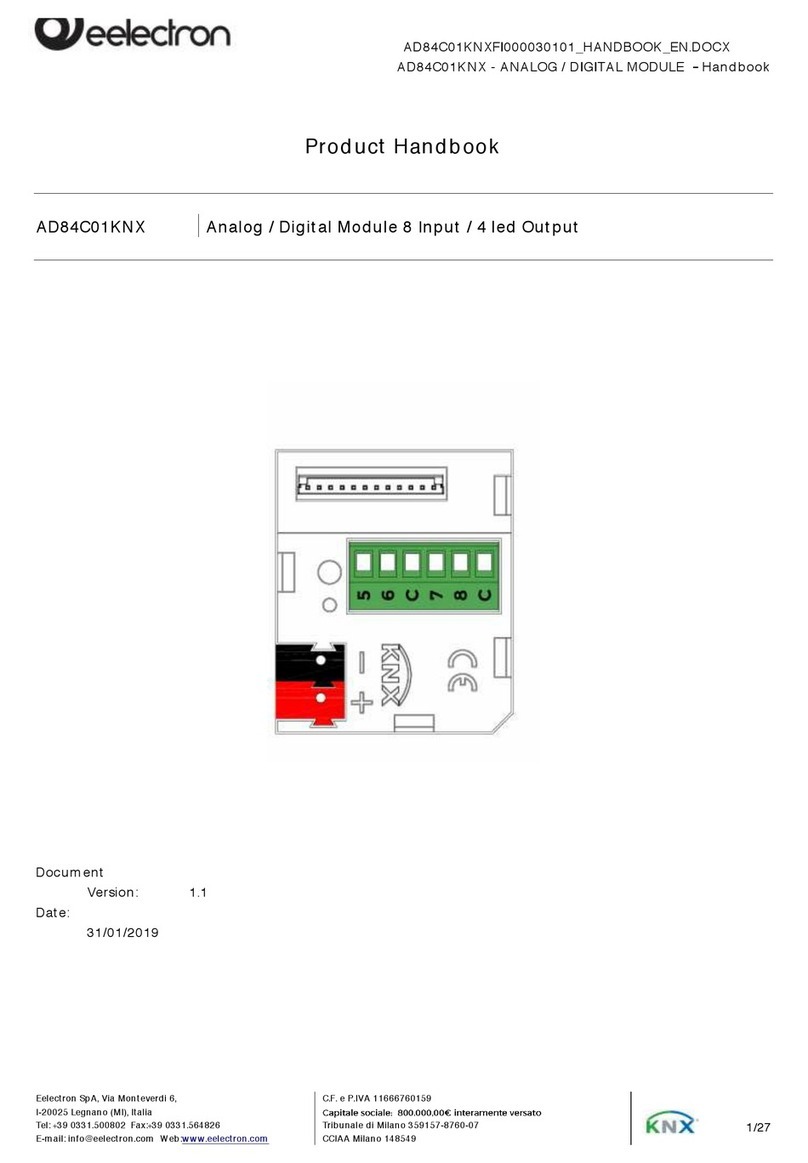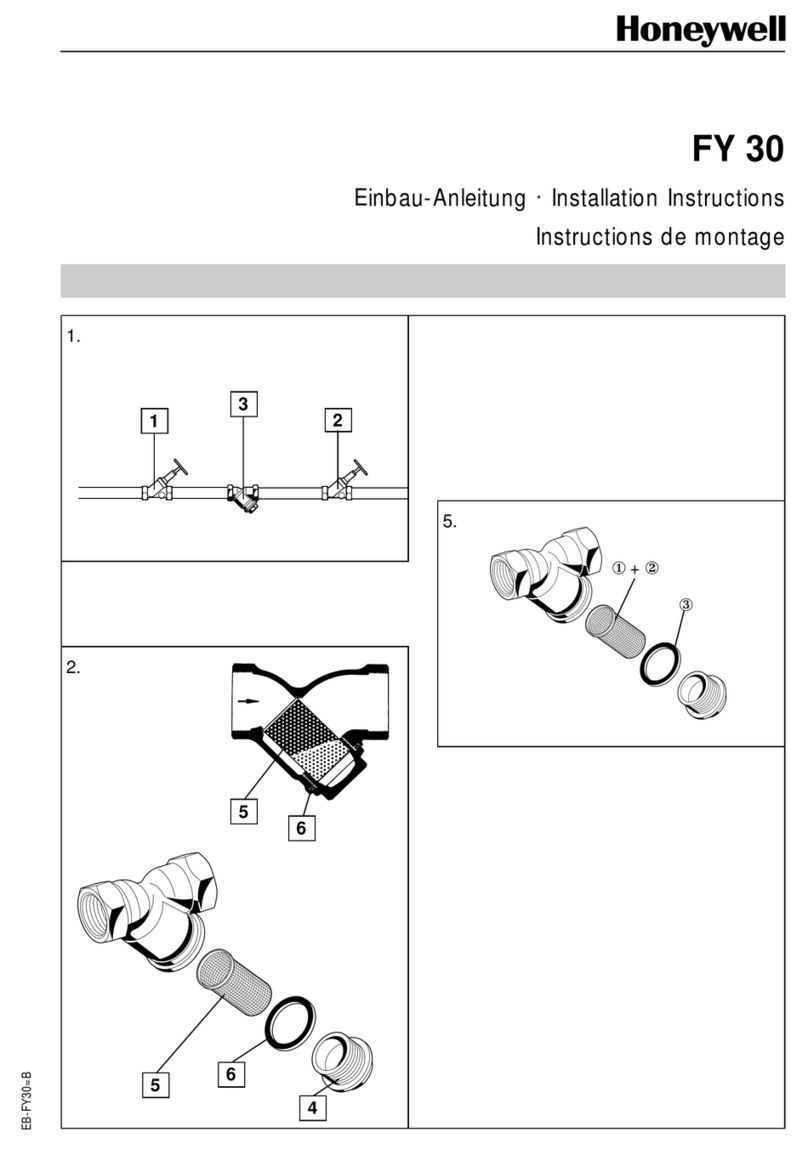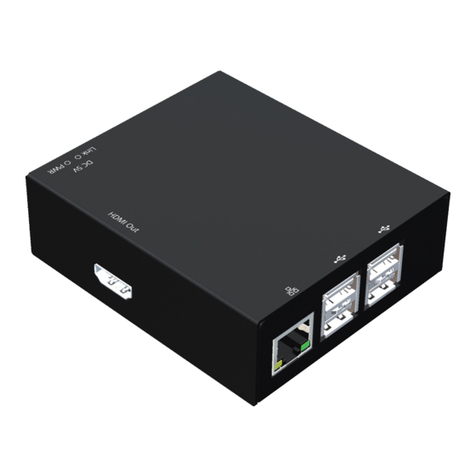spikenzielabs Useless Machine User manual

For the best outcome, follow each step in order.
We recommend reading this guide entirely before you get started.
Tools required:
One phillips screwdriver, and one flat screwdriver, soldering Iron, solder, snips and
supplies to build your own Useless Machine.
The Useless Machine
Parts Only - Build Guide
v0001
TM

Laser cut acrylic, electronics, hardware parts
Motor mount - wire side Motor mount - Arm side
2x #4 weld nuts
4x 4-40 nuts
2x #4 washers
4x 3/8” 4-40 screws
2x 1” 4-40 screws
#12 washer Switch nut
and washer
#2 screw and
washer
Battery holder
PCB
220 ohm resistor
100 ohm resistor Switch
Motor
Base washers
Arm
Base
2 Color LED
Snap switch
Screw terminals
Some of the steps in the build of this kit require the snipping component legs. If
you’re building this kit on your own, or with a someone else, we STRONGLY
recommend whoever is present is wearing safety glasses. When the legs are
snipped, the can fly off in unpredictable directions, at a high speed. Also, be sure to
follow the safety instructions that came along with your soldering iron. Wash your
hands after handling solder. Especially before eating. Be safe, and enjoy.
!

Assembling the PCB
Switch Installation:
Make sure that the switch
is being installed on the
top side of PCB. There is
no orientation to the
switch. Refer to these
photos.
Switch Soldering:
The switch needs to be standing perfectly
vertical on the PCB. We use a ‘Helping
Hands’ tool to hold the solder.
This way, your fingers hold the switch,
and the other hand is free to solder.
Solder one tab, and see if the switch is
90˚ to the PCB.
Resistor Preparation:
There are 2 resistors in the kit. One
100 Ohm (brown black brown), gets
installed into [R1]. The 220 Ohm (red-
red-red) gets installed in [R2].
Bend the legs like in the photos here,
with the leg as close as possible to the
body of the resistor.

Resistor placement and soldering:
1- Place the resistors in place as
the photo above.
2- Flare the legs
to hold the
resistors in place
3- Solder the 4
legs on the
bottom side of the
PCB.
4- While wearing
safety glasses,
Trim the excess.
Screw terminal placement and soldering:
1- Slide the 2 screw
terminals together joining them
into one single 4 pin strip.
2- The holes in
the screw
terminals need to
be aiming away
from the switch.
3- Solder all 4 pins.

Aligning and soldering the LED:
1- Notice the different lengths of
the legs on the LED. Leg #2 is
the longest. #1 is the second
longest, and #3 is the shortest.
The LED gets installed with leg
#1 closest to the edge of the
PCB.
Important to note:
The LED gets installed on the
bottom side of the PCB.
123
2- Slide the 3 LED legs down
through the holes in the PCB.
3- Leaving about
.25” of leg bend the LED so that it
can bend like the photo in step #4.
4- Bend the led like in this photo,
and hold it in place.
5- Solder the three legs of the LED,
and snip the excess.

Placing and installing the snap switch:
1- The snap switch gets installed
on the bottom side of the PCB.
The hinge side of the snap
switch goes on the indicated
side on the PCB.
2- Line up the 3 pins with the
three holes on the PCB.
3- Press firmly on the snap switch,
making sure it is flush with the
surface of the PCB.
4- Solder one pin, and check to
make sure the snap switch is flush
with the PCB.
5- Solder the other two pins.
Hinge

Peel the protective film
All of the acrylic parts have a cling film that protects the pieces during manufacturing
and transport. The film or tape may be blue, brown or white. Start at a corner, and
remove the film from both sides of each piece.
Ready the motor, motor mount, and fasteners
Line up the 2 long screws, 2 small washers, 2 motor mount acrylic pieces, and weld
nuts as you see below.
Motor mount arm side
2x 1” 4-40 screws
2x #4 weld nuts
2x #4 washers
Motor mount wire side
Motor
Wire
Side
Nub

Attaching the motor to the mount
Hold the motor with the wires on the
left and away from you. The ‘nub’
facing you.
Place the arm side motor mount acrylic
piece over the motor, making sure that
the ‘nub’ fits in the hole in the mount.
Nub
Hold the other motor mount as
above. Place against the wire
side of the motor
Place the weld nuts into the holes on the
arm side of motor mount.
The weld nuts
Hold the weld nuts in place
with tape or your fingers. In
the next step we will be
screwing them in place.
Nub

Place a washer on each
of the long screws While holding the weld nuts in place, slide both screws
through the washers, motor mount, motor and screw into
the weld nut. For the moment, leave the screws loose
enough so that the motor mount plastic can wiggle a little.
With the screws a little loose, press
down against a flat surface, so that
the both bottoms of the motor
mount are flat.
Keeping the bottoms of the motor
mount flat against the surface,
tighten both screws. Do not over-
tighten, you may crush the motor.

Attaching the PCB assembly
Take the PCB that you’ve previously
assembled.
Place the PCB assembly over the
motor assembly.
Note how the acrylic tabs fit
through the holes in the PCB.
You will be using these nuts and screws to hold
secure the PCB to the motor mount.
3/8” 4-40 screws
4-40 nuts
Slide the nut into the
slotted area in the mount,
and start sliding the
screw through the hole in
the PCB.
Using your fingers,
tighten the screw.
Make sure the nut
does not slide out.
Finish tightening the
screw using a
screwdriver.

In the same way, slide in the other nut, on the other side, and attach the other screw.
!In order to attach the arm, the motor spindle should be in
the 12 o’clock position (or close to it). Check yours.
✘Bad ✘Bad
12 o’clock position
✔Good
If your motor happens to be in the correct 12 o’clock position,
skip to: Attaching the arm

Adjusting the motor shaft position
!Skip this step if your motor shaft is already in a
12 o’clock position - from the previous step
Load 2x AA batteries into
the battery holder.
Do not try to twist the motor spindle
by hand, or using the arm. We will
show you how to use the battery
pack to rotate the motor.
Touch the red and black wires to the wires
connected to the motor. Pull one of the
wires away and check the position of the
motor shaft. Repeat until you have the
motor shaft at a 12 o’clock position.
Really close is good too.
Once done, remove the batteries from the
holder and set it aside.
Attaching the arm
Locate these parts:
#2 screw #12 washer
#2 washer
The arm

Place the large washer over the motor spindle.
Note: The washer and arm get attached to the
LED / Switch side.
The large washer in place.
Align the arm piece so that the laser cut hole will fit the motor spindle. Press the arm
over the spindle until the top of the spindle and the arm plastic are flush. The arm
does not get pushed all the way down to the washer. Make sure not to bend the level
on the snap switch with the arm, as you are attaching the arm to the motor spindle.
Do not try to move the arm with your hand.
You will break the gears in the motor
!

Put the #2 washer on
the #2 screw.
Using a screwdriver, screw in the screw and washer to
secure the arm.
Installing completed motor assembly
Line up the 2 slots, and place the
motor assembly in place.
Next, we will be attaching
the base.
Set up the bottom panel, and
the motor assembly in this
orientation in front of you.
Note, the arm side of the base
has the slot closer to the slot.

Slide the screw through the base, and
side the nut in so it rests in the slot.
Tighten with a screwdriver, do not over
tighten.
Do the same on the other side of the
assembly. Slip the nut in the slot, and
slide the screw up from the bottom
Tighten with a screwdriver, do not over
tighten.
You will be using these nuts and screws to hold secure
the motor mount assembly to the bottom plate.
3/8” 4-40 screws
4-40 nuts

Attaching the wires
To attach the wires, you will need a
small flat blade screwdriver. Start by
sliding the black wire from the battery
pack in to the screw terminal marked
-BLACK on the PCB.
The red wire from the battery pack goes
to the +RED screw terminal. Screw both
in place.
Note: Make sure to tighten the screw terminals onto the bare wire, and not the colored
plastic casing. You may have to loosen the screw terminal in order to get the wire in.
The bottom wire coming off the motor
goes beside the black wire. Handle
these wires carefully, the terminals on
the motor are not very robust.
Slide in and screw down the wire.
The top wire from the motor connects to
the last screw terminal. Slide it in place,
and screw it down.

Motor and wiring testing flowchart
Flip switch - away from arm
Install batteries
Arm should move down
(If not already in
the down position)
Flip switch - towards arm
Works well?
Continue to next step
No
Yes
Troubleshooting
No movement at all:
- Check batteries.
- Verify black goes to (-) and red to
(+) on the PCB assembly.
- Make sure bare wire is making
contact in each of the screw
terminals, and not the plastic
covering.
Arm moves the wrong way:
- Switch the position of the two wires
from the motor going to the screw
terminals on the PCB assembly
After troubleshooting, test with this
flowchart once again.
No
There are four mounting holes on the base to
mount the mechanism into the box you create.
We included four 1/8” washers so that if
required, the base can be bolted down inside
your box .
Arm does not toggle the switch:
- Loosen the 2x 1” screws that go
through the motor and mount a little.
Table of contents
Other spikenzielabs Control Unit manuals

